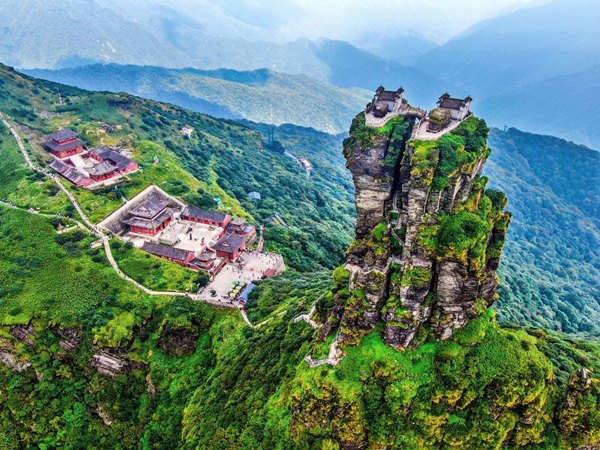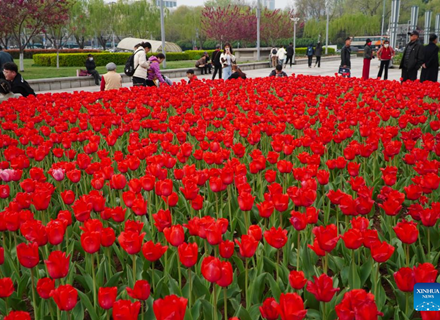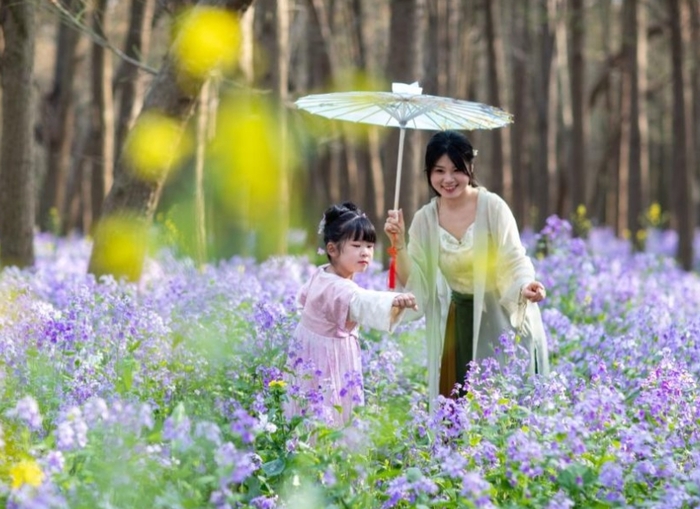Fanjing Mountain Pure, Sacred Land
 |
| Fanjing Mountain [Tuchong] |
Fanjing Mountain is one of China's five famous Buddhist mountains. The name, Fanjing, is an abbreviation of fantian jingtu, which literally means "Brahma's pure land" in Chinese. The mountain was added to the World Natural Heritage List in July 2018.
Fanjing Mountain is located where three counties — Jiangkou, Yinjiang and Songtao — converge in Tongren, in Southwest China's Guizhou Province. It has the highest peak — at an elevation of 2,572 meters — of the Wuling Mountain Range. The mountain covers more than 700 square kilometers.
In 1986, the mountain was listed as one of the first national natural reserves in China, and it was placed under the protection of UNESCO (United Nations Educational, Scientific, and Cultural Organization)'s Man and Biosphere Program.
Fanjing Mountain has proven its value as a natural heritage site; it is home to forests, wetlands, waterfalls and 450 vertebrate species, notes the International Union for Conservation of Nature (IUCN), official advisory body on the natural sites of the UNESCO heritage committee. The mountain was the 13th site in China to be added to the World Natural Heritage List.
The mountain has been identified as the world's most well-preserved primeval forest. The ecosystem of the mountain contains large numbers of ancient relict plants, rare and endangered creatures, and various unique species. It is home to 4,395 species of plants and 2,767 species of animals.
The mountain is the most important reserve of beech forests in Asia, it is the world's most gymnosperm-rich area, and it is the only habitat of the rare Qian (Guizhou for short) golden monkey and the Fanjing Mountain fir.
Fanjing Mountain has three main summits. Climbing along the winding mountainous roads to the summits is a rewarding pleasure. Red Cloud Golden Summit is the perfect place to overlook the mountain, and to enjoy the splendid sea of cloud and mist. The clouds, reddened by the morning glow of the sun around the summit, is considered to be a sign of auspiciousness. The mushroom-like rock is the landmark of the mountain. It is a must-see site for visitors.
The religious significance of Buddhist temples adds splendor to the charm of Fanjing Mountain. Its established reputation as a sacred land of Buddhism can be traced back to the Ming Dynasty (1368-1644). There are numerous Buddhist temples on the mountain, and the temples for worshiping Maitreya and Sakyamuni are the most famous. Each year, numerous adherents of Buddhism climb the mountain to worship.
(Women of China English Monthly October 2020 issue)
Please understand that womenofchina.cn,a non-profit, information-communication website, cannot reach every writer before using articles and images. For copyright issues, please contact us by emailing: website@womenofchina.cn. The articles published and opinions expressed on this website represent the opinions of writers and are not necessarily shared by womenofchina.cn.








 WeChat
WeChat Weibo
Weibo 京公网安备 11010102004314号
京公网安备 11010102004314号